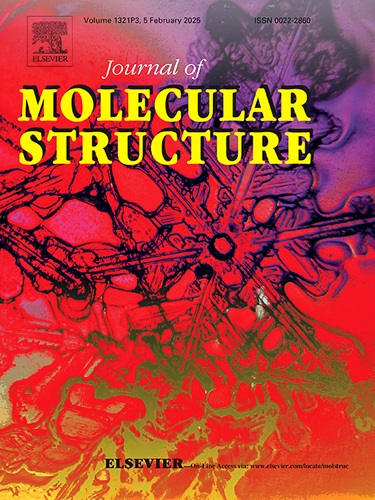A highly efficient and magnetically separable Fe3O4@CeO2 nanoparticles for the catalytic production of some substituted 1, 5-benzodiazepines as potential orthopedic agents
IF 4
2区 化学
Q2 CHEMISTRY, PHYSICAL
引用次数: 0
Abstract
1, 5-Benzodiazepines are significant compounds that are commonly used in orthopedics, primarily for their anxiolytic and muscle relaxant properties. Heterogeneous catalysis offers a promising approach for conducting eco-friendly and sustainable organic transformations. Benzodiazepines are important nitrogen-containing heterocyclic compounds with numerous biological activities. The use of Fe3O4@CeO2 as a catalyst for the synthesis of some substituted 1, 5-benzodiazepines is innovative and efficient. Characterization techniques including FT-IR (Fourier transform infrared), XRD (X-ray diffraction), FE-SEM (field emission scanning electron microscopy), TEM (transmission electron microscopy), EDS (energy dispersive X-ray spectroscopy), DRS (diffuse reflectance specroscopy), XPS (X-ray photoelectron spectroscopy) and VSM (vibrating magnetometry) are used to identify the catalyst physicochemical structure. Some important experimental parameters such as reaction time, mole ratio of reagents, and temperature are evaluated to assess the optimum reaction condition. The best reaction condition includes 1 mmol of aryl aldehyde, dimedone, and 1, 2-phenylenediamine in the presence of 20 mg Fe3O4@CeO2 catalyst in 10 mL ethanol for 90 min. Moreover, stability and reusability studies have confirmed acceptable results for the performed catalytic reaction in multiple runs, indicating its practical applicability.
求助全文
约1分钟内获得全文
求助全文
来源期刊

Journal of Molecular Structure
化学-物理化学
CiteScore
7.10
自引率
15.80%
发文量
2384
审稿时长
45 days
期刊介绍:
The Journal of Molecular Structure is dedicated to the publication of full-length articles and review papers, providing important new structural information on all types of chemical species including:
• Stable and unstable molecules in all types of environments (vapour, molecular beam, liquid, solution, liquid crystal, solid state, matrix-isolated, surface-absorbed etc.)
• Chemical intermediates
• Molecules in excited states
• Biological molecules
• Polymers.
The methods used may include any combination of spectroscopic and non-spectroscopic techniques, for example:
• Infrared spectroscopy (mid, far, near)
• Raman spectroscopy and non-linear Raman methods (CARS, etc.)
• Electronic absorption spectroscopy
• Optical rotatory dispersion and circular dichroism
• Fluorescence and phosphorescence techniques
• Electron spectroscopies (PES, XPS), EXAFS, etc.
• Microwave spectroscopy
• Electron diffraction
• NMR and ESR spectroscopies
• Mössbauer spectroscopy
• X-ray crystallography
• Charge Density Analyses
• Computational Studies (supplementing experimental methods)
We encourage publications combining theoretical and experimental approaches. The structural insights gained by the studies should be correlated with the properties, activity and/ or reactivity of the molecule under investigation and the relevance of this molecule and its implications should be discussed.
 求助内容:
求助内容: 应助结果提醒方式:
应助结果提醒方式:


